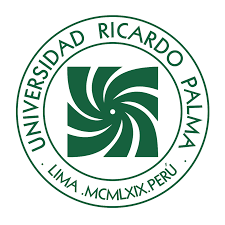Primeros pasos usando la tecnología FPGA
DOI:
https://doi.org/10.31381/perfilesingenieria.v20i21.6320Keywords:
FPGA, VHDL, software Matlab, lógica, tecnologíaAbstract
Antecedentes: Esta investigación tiene como objetivo principal mostrar de manera general la tecnología FPGA, Field Programable Gate Array – Arreglo de Compuertas programables en el Chip. Se hablará aquí de su arquitectura, empresas fabricantes, descripción de un circuito sencillo usando VHDL, Very High Speed Hardware Description Language, Software Quartus II y la tarjeta Cyclone II de INTEL. Método: Se uso un circuito sencillo de lógica combinacional para efectuar la simulación con el software Quartus II. Dejando todo claramente indicado para realizar proyectos de mayor envergadura. Resultados: Los resultados del estudio muestran que las gráficas obtenidas como respuesta del circuito estudiado fueron las esperadas, y además que se pudieron comprobar propiedades del software en estudio. Conclusiones: Se estudiaron las características generales de la tecnología FPGA. Se conocieron las funciones básicas del software Quartus II para ejecutar un proyecto en todas sus fases.
Downloads
References
P. Kumar, «Development of Programmable Logic Devices,» International Journal of Innovative Research in Computerand Communication Engineering, vol. 8, nº 4, 2020.
P. Kumar, «Analysis of ASIC Design Methodology in Advanced Digital System,» International Journal of Innovative Research in Computer and Communication Engineering, vol. 8, nº 4, 2020.
E. Saeed, Basics VHDL Labs. Basics Lab for Learning VHDL. Learning with Experiments, Al Nahrain. Irak: Lap Lambert, 2020.
A. Ivanova, «A Concept of Visual Programming Tool for Learning VHDL,» IOP Conference Series: Materials Science and Engineering, 2020.
INTEL-ALTERA, «Quartus II Handbook Version 13.1. Volume 1: Design and Synthesis,» November 2013. [En línea]. Available: https://www.intel.com/content/www/us/en/software-kit/666221/intel-quartus-ii-web-edition-design-software-version-13-1-for-windows.html.
S. Rai, P. Nath, A. Rupani, S. Vishvakarma y A. Kumar, «A Survey of FPGA Logic Cell Designs in the Light of Emerging Technologies,» IEEE Access, vol. 9, pp. 91564 - 91574, 2021.
INTEL, «Cyclone II Device Handbook, Volume 1,» 2008. [En línea]. Available: https://www.intel.com/content/dam/www/programmable/us/en/pdfs/literature/hb/cyc2/cyc2_cii5v1.pdf.
C. Figueroa y S. Giraldo, Diseño y construcción de un instrumento prototipo para el análisis de la ley de Hooke, caida libre y pendulo simple usando dispositivos FPGAs, Pereira. Colombia, Universidad Tecnológica de Pereira. (Tesis de Maestría), 2019.
INTEL, «Descargar software QUARTUS II,» 2021. [En línea]. Available: https://www.intel.com/content/www/us/en/software-kit/666221/intel-quartus-ii-web-edition-design-software-version-13-1-for-windows.html.
C. Fajardo, «Introducción a VHDL. Circuitos Secuenciales: Registros y Contadores. Universidad Industrial de Santander,» 2013. [En línea]. Available: https://www.youtube.com/watch?v=vTmBuR-JgvM.
B. ROBLES, Principios del FPGA y aplicaciones en el control de procesos industriales., Universidad de El Salvador. San Salvador. El Salvador: (Tesis de Pregrado), 2016.
F. Urbano, «Simulación usando Altera Quartus II 13 sp1 Web Edition,» 2013. [En línea]. Available: https://www.youtube.com/watch?v=C7f5mO6Tjk0.
C. Benalcazar y I. Andrade, Diseño e implementación de prácticas con FPGA para la materia de Digitales II mediante la herramienta de trabajo Cyclone II de Altera, Guayaquil. Ecuador, (Tesis de Pregrado), 2012.
INTEL, «Intel FPGA USB Download Cable User Guide,» 2016. [En línea]. Available: https://www.intel.com/content/dam/www/programmable/us/en/pdfs/literature/ug/ug_usb_blstr.pdf.
C. Maxfield, The design warrior´s guide to FPGA, Road Burlington, Massachusets, USA: ELSEVIER, 2004.
S. Naing, N. San y T. Chao, «FPGA Based Digital Logic Circuits Operation for Beginners,» International Journal of Trend in Scientific Research and Development (IJTSRD), vol. 3, nº 5, pp. 495-501, 2019.
H. Cao y U. Meyer, «XML-Based Automatic NIOS II Multi-Processor System Generation for Intel FPGAs,» Electronics, 2022.
F. Santos, Emulación basada en FPGA de los efectos de los single event upsets ocasionados por la radiación en circuitos digitales tolerantes a fallos, Madrid. España, Universidad Complutense de Madrid. (Tesis Doctoral), 2018.
M. Mustaph y N. Zulkarnain, «Full cycle trigonometric function on Intel Quartus II Verilog,» International Conference on Engineering and Technology (IntCET 2017), 2018.
U. Cem y T. Bora, Digital System Design with FPGA: Implementation Using Verilog and VHDL, Estambul. Turquia: McGraw Hill, 2017.
Published
How to Cite
Issue
Section
License
Copyright (c) 2024 Pedro Selencio Landaeta

This work is licensed under a Creative Commons Attribution 4.0 International License.
In the event that the manuscript is approved for its next publication, the authors retain the copyright and assign to the journal the right of publication, edition, reproduction, distribution, exhibition and communication in the country of origin, as well as in the abroad, through print and electronic media in different databases. Therefore, it is established that after the publication of the articles, the authors may make other types of independent or additional agreements for the non-exclusive dissemination of the version of the article published in this journal (publication in books or institutional repositories), provided that it is explicitly indicated that the work has been published for the first time in this journal.
To record this procedure, the author must complete the following forms:

1.png)








